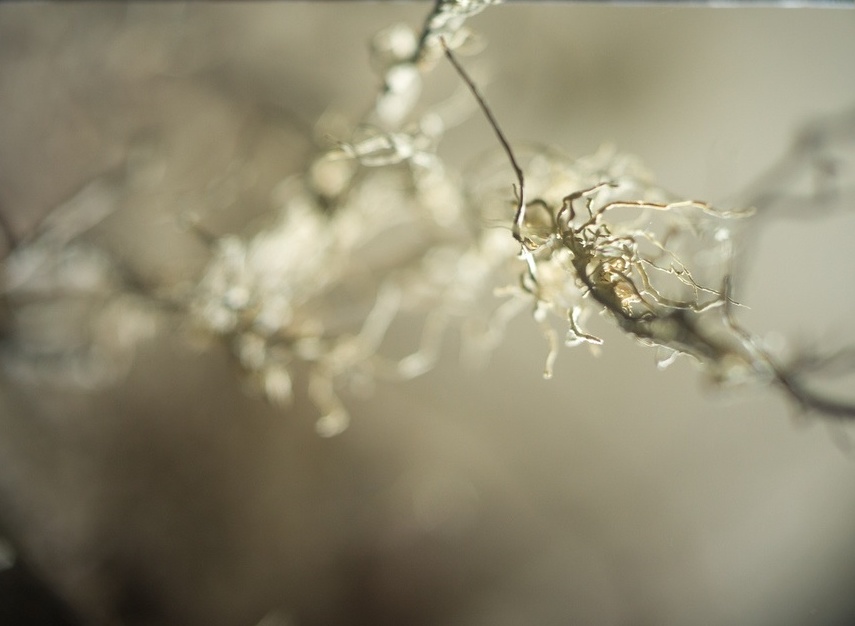Practicing Attunement
Attunement as an embodied research technique has become an important part of FoAM’s work. It offers a proposition for multisensory engagement with Earth-bound environments and their inhabitants.
Excerpts adapted from the Dust and Shadow Reader #2
Attunement suggests a willingness to be touched by external circumstances, to be lured, affected, and changed by them. Attuning to another being or situation invokes a particular sensitivity — receptive and curious, careful and attentive. A deliberately hesitant engagement with other entities on their own terms, from quivering butterfly wings to earth-shattering volcanoes. A kind of “ecological intimacy”.
Since a thing cannot be known directly or totally, one can only attune to it, with greater or lesser degrees of intimacy. This is not a “merely” aesthetic approach to a basically blank extensional substance. Since appearance can't be peeled decisively from the reality of a thing, attunement is a living, dynamic relation with another being. The ecological space of attunement is a space of veering, because rigid differences between active and passive, straight and curved, become impossible to maintain. (...) Attunement is the feeling of an object's power over me —I am being dragged by its tractor beam into its orbit.
Tim Morton, Attune

Attuning to a place—a swamp, an island, a jungle, or a desert for example—begins with noticing what is around you. Noticing that you share the condition of being in this place with many other beings. Trees, insects, wind, concrete. Being open, curious, and sensitive to what is already present and seeing yourself as implicated, affecting, and being affected by the place and all that is part of it. Leeches, branches, haunted pasts and convoluted presents. In this intently receptive state, you can viscerally experience that human separateness from the world is a delusion. You can perceive the place as a continuously transforming field of relations, where different agencies contribute to making a particular place at a particular time. Bodies of water, of plants, animals, and landscapes rubbing against and flowing through each other.

By attuning to a place you acknowledge the existence of its unique rhythms; over time you can learn to improvise with them. While all research depends on curiosity and observation, attuning also demands bodily engagement rather than detachment. Walking on the uneven surface of a shore becomes a “response-able” dance between your body and the many surfaces it encounters. Sitting still for long periods of time becomes easier when you're attuned to a rock. You can train your ears to echo-locate, listen to liminal frequencies, and appreciate the subtle differences of silence.
Engaging with worlds by attuning to their patterns, dissonances, and resonances may seem unnecessarily slow or ambiguous when faced with the complex urgency of our times. True, attunement may not provide a “way out” of contemporary troubles, but perhaps finding a way out is impossible. Instead, attunement offers a “way in” to deeper and closer connections with life and “alterlife”, in all of its nuances and intricacies. Alterlife names life already altered, which is also life open to alteration. It indexes collectivities of life recomposed by the molecular productions of capitalism in our own pasts and the pasts of our ancestors, as well as into the future. It is a figure of life entangled within community, ecological, colonial, racial, gendered, military, and infrastructural histories that have profoundly shaped the susceptibilities and potentials of future life.
— Michelle Murphy in Alterlife and Decolonial Chemical Relations
Attuning awakens our innate capacity for engaged noticing and responding in kind. Through practices of attunement we may rediscover an ability for subtle responsiveness that lies waiting in a world dominated by opinions, judgements, and binary certainties. An entry point into meaningful relationships beyond established modes of communication. Bodies changing posture in response to a punch or an embrace. Languages mimicking their native landscapes. Tuning instruments, machines, or brainwaves. The small acts of care between humans and insects, humans and stones, rain and desert. Attunement accepts human interdependence with the planet as a given. It reminds us that a mutualistic or symbiotic state of being in the world is not only possible but already present.
What does the world look like when we shift our perspective so human life appears further from the centre of view? What would it be like to engage with all forms of matter as members of a pan-demos?
To expand the experience of sociality to include other than human encounters?
This process demands a deepening of our capacity for receptive awareness. To deeply listen and hear other voices, even if we might not be able to understand them. Our bodies can become antennas, or listening devices, or human-sized resonance chambers. Our technologies can extend our ears to the size of the Earth. They can entwine our human ears with plant ears, insect ears, ears made of dust, or the antennae of aeroplankton.
Experiencing the world as inhabited by interacting, entangled agents capable of change can become a way of being with them more closely. Touched by and in touch with millions of entities at every moment.

❧